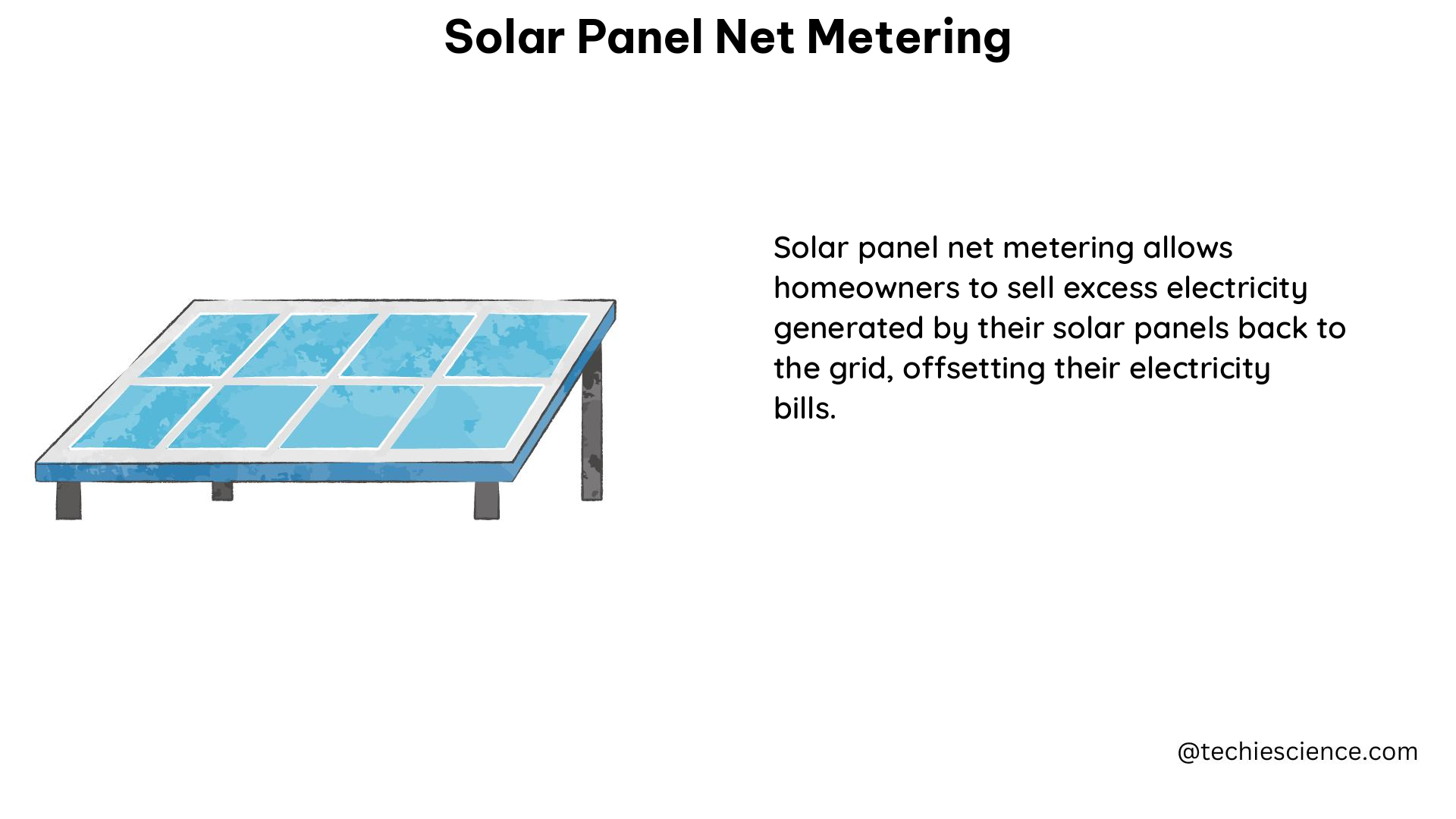Solar panel net metering is a billing system that allows homeowners with solar panels to receive credit for the excess electricity they produce and send back to the grid. This credit can then be used to offset the cost of electricity drawn from the grid when the solar panels are not producing enough power, such as during the night or on cloudy days.
Understanding the Benefits of Solar Panel Net Metering
According to a study by the National Renewable Energy Laboratory, net metering can lead to significant cost savings for both solar and non-solar customers. In 2014, a study commissioned by the Nevada Public Utility Commission found that net metering provided $36 million in benefits to all NV Energy customers, including cost savings from avoided infrastructure investments and lower electricity rates.
A meta-analysis by the Brookings Institution concluded that net metered, rooftop solar is a net benefit to all ratepayers. The study found that the value of solar electricity is often greater than the retail electricity rate, meaning that solar owners are putting more value onto the grid than they are being compensated for via net metering.
Technical Specifications of Solar Panel Net Metering Systems

Net metering systems typically involve a bi-directional meter that can measure both the electricity drawn from the grid and the excess electricity sent back to the grid. The meter spins forward when electricity is drawn from the grid and backward when excess electricity is sent back to the grid. The credit for the excess electricity is usually applied to the customer’s bill at the same retail rate they pay for electricity drawn from the grid.
Bi-Directional Meter Specifications
- Measures both electricity drawn from the grid and excess electricity sent back to the grid
- Spins forward when electricity is drawn from the grid and backward when excess electricity is sent back to the grid
- Credit for excess electricity is usually applied to the customer’s bill at the same retail rate they pay for electricity drawn from the grid
Net Metering Policies and Regulations
It’s important to note that net metering policies and rules can vary by state and utility company. Some utilities may have limits on the amount of excess electricity that can be credited, or may require customers to install a separate meter for their solar system. It’s important for homeowners considering solar panels to research their utility’s net metering policies and choose a solar installer who is familiar with those policies.
Examples of Net Metering Policies and Regulations
- Some utilities may have limits on the amount of excess electricity that can be credited
- Some utilities may require customers to install a separate meter for their solar system
- Net metering policies and rules can vary by state and utility company
Calculating the Value of Solar Electricity
The value of solar electricity is often greater than the retail electricity rate, meaning that solar owners are putting more value onto the grid than they are being compensated for via net metering. According to a study by the Solar United Neighbors, the value of solar electricity can be calculated using the following factors:
- Avoided energy costs: The cost of the electricity that the utility would have had to generate or purchase to meet the customer’s demand.
- Avoided capacity costs: The cost of building and maintaining power plants and other infrastructure to meet peak electricity demand.
- Avoided transmission and distribution costs: The cost of building and maintaining the power lines and other infrastructure to deliver electricity to customers.
- Avoided environmental costs: The cost of the environmental impact of generating electricity, such as air pollution and greenhouse gas emissions.
- Grid support services: The value of the services that solar systems provide to the grid, such as voltage regulation and frequency control.
By considering these factors, the value of solar electricity can be calculated and compared to the retail electricity rate to determine the net benefit of net metering.
Conclusion
In summary, solar panel net metering is a billing system that allows homeowners with solar panels to receive credit for the excess electricity they produce and send back to the grid. Studies have shown that net metering can lead to significant cost savings for both solar and non-solar customers, and that the value of solar electricity is often greater than the retail electricity rate. Technical specifications for net metering systems typically involve a bi-directional meter that can measure both the electricity drawn from the grid and the excess electricity sent back to the grid. It’s important for homeowners considering solar panels to research their utility’s net metering policies and choose a solar installer who is familiar with those policies.
References:
– Procedure for Measuring and Reporting the Performance of Grid-Connected Photovoltaic Systems, National Renewable Energy Laboratory, 2006.
– Rooftop solar: Net metering is a net benefit, Brookings Institution, 2016.
– Value of solar – Solar United Neighbors, Solar United Neighbors, accessed on July 9, 2024.

The lambdageeks.com Core SME Team is a group of experienced subject matter experts from diverse scientific and technical fields including Physics, Chemistry, Technology,Electronics & Electrical Engineering, Automotive, Mechanical Engineering. Our team collaborates to create high-quality, well-researched articles on a wide range of science and technology topics for the lambdageeks.com website.
All Our Senior SME are having more than 7 Years of experience in the respective fields . They are either Working Industry Professionals or assocaited With different Universities. Refer Our Authors Page to get to know About our Core SMEs.